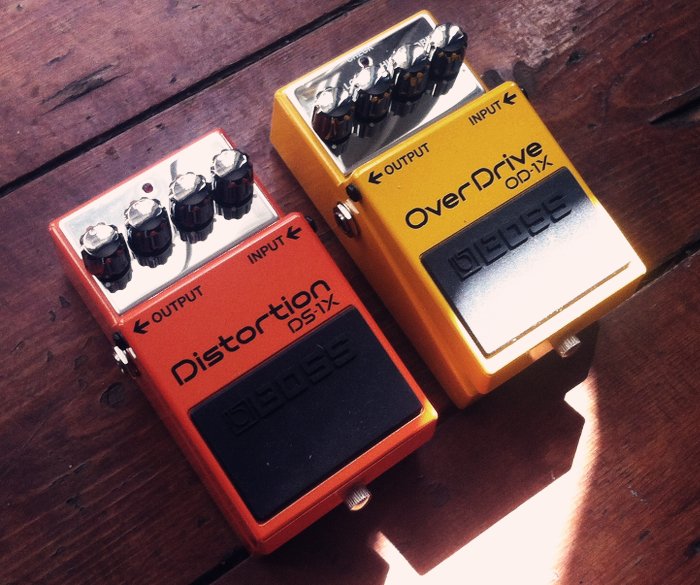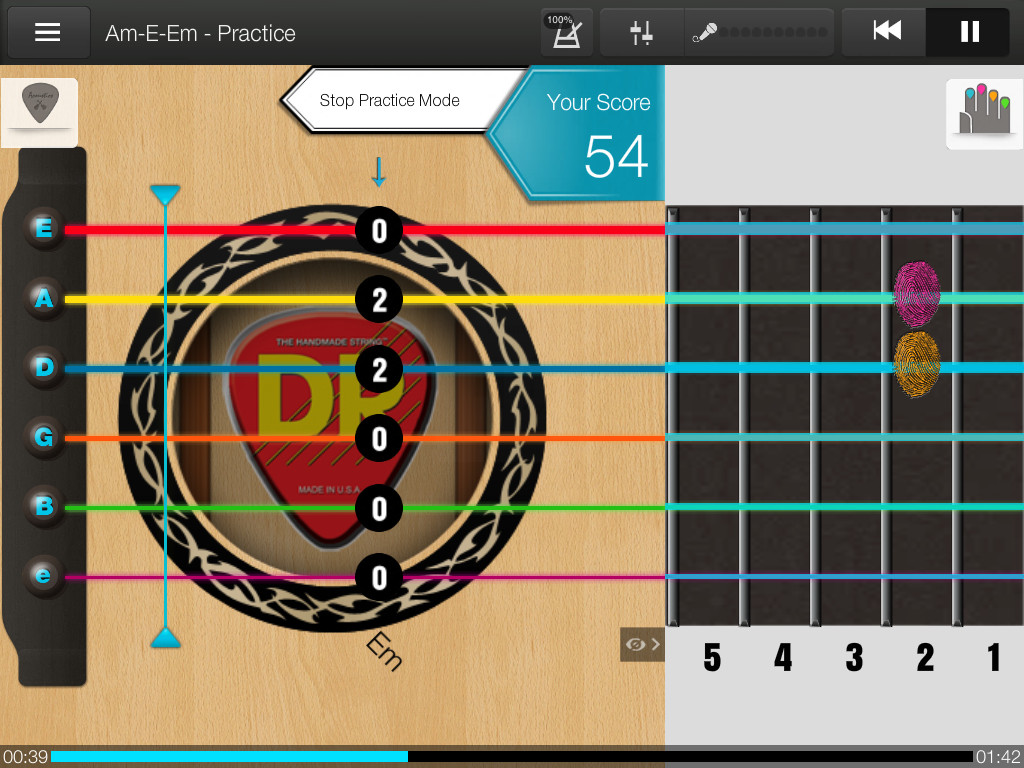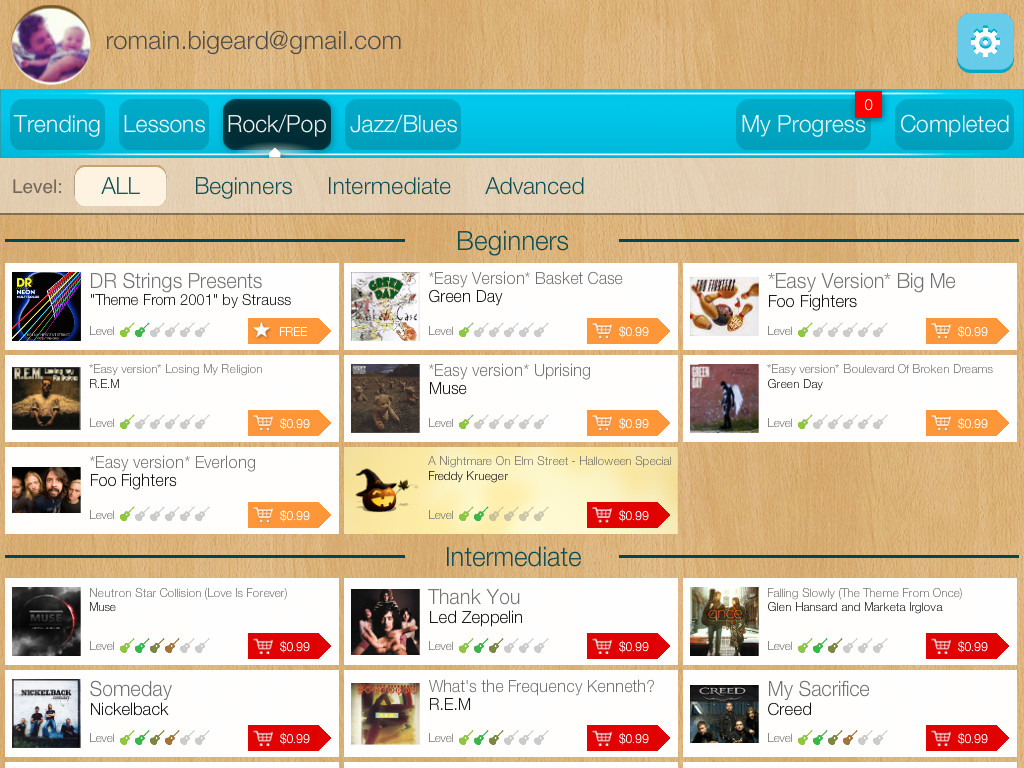The Boss DS-1X and OD-1X pedals were presented at NAMM last January and they have created quite a buzz since then. Thanks to Roland Australia, I have been able to test them and, well, the buzz is justified!

Based on Boss’s MDP technology (for Multi-Dimensional Processing), they are modern digital re-creations of the über classic DS-1 distortion and OD-1 overdrive pedals, the very first of their kind in the Boss line, both released in the late 70s. The DNA of those seminal stompboxes can be heard in those ‘X’ versions, but they go much further in terms of gain and EQ capabilities, these are 2014 pedals, not some sort of vintage simulations (and this is a good thing).
I will cut to the chase, here is where I think they shine and this applies to both of them:
– At full blast, they offer more gain that most Distortion or Overdrive pedals while retaining an excellent articulation. My Stratocaster has Kinman noiseless pickups which are not very hot (by design, it’s the blues set) and I often feel the need to use an overdrive to boost my distortion pedals. Not with the DS1-X or even the OD1-X, there is plenty of gain and sustain on tap, even with “vintage output” pickups.
– They clean up quite well when rolling off the volume on the guitar, except maybe at the highest gain settings with the DS-1X but that is to be expected. I have tried to demonstrate this in my videos.
– They have a very efficient 2 band EQ with a Low and a High knob, a plus compared to a lot of overdrive or distortion stompboxes which only have a tone knob.
– The tonal characteristics of the guitar still go through. I have tested them with a Fender Strat and a Gibson SG 61 Reissue, they clearly sounded different, even on high gain settings
– There was a time when mentioning “digital” and “distortion” or “overdrive” in the same sentence would make guitarists having instant fits but I suspect we will get none of that with the new Boss offering.
As I mentioned earlier, the remarks above apply to both models I think, let me go into what differentiates them.
OD-1X
Yellow Boss pedals are usually overdrives, the OD-1X is no exception, with a hint of sparkly finish. It sport four knobs: level for the output volume, low and high for EQ and drive for the amount of overdrive.
The drive is quite progressive going from a gritty not-so-clean tone to an all out nearly Van Halen-esque big rock tone. I find that with the gain at 3 o’clock (i.e 75 % or so), there is a sweet spot between clarity and sustain, it’s a very pleasing lead tone. Coupled with the aforementioned efficient 2-band EQ and a good dose of volume boost under tap, the OD-1X is a very versatile overdrive.
Tonewise, it is definitely related to the OD-3/SD-1/etc., it’s a Boss overdrive so if you are looking for something totally different, you might be disappointed (although it wouldn’t hurt to try it would it?). Apart from that, it is a top notch overdrive and it is hard to believe it is digital.
DS-1X
The sparkly orange DS-1X recalls the DS-1, the first distortion released by Boss and adopted by people like Joe Satriani, Steve Vai, Gary Moore (his early 80s strat Marshall tone was boosted by a DS-1), Kurt Cobain, etc.
It has four knobs: level for the output volume, low and high for EQ and dist to change the amount of distortion. And distortion there is, believe me, this would almost qualify as a metal pedal.
At low distortion (as shown in videos scattered around this post), it is already quite grittier than the OD-1X. At 3 o’clock, it’s already in the realm of high sustain, searing leads. At full blast, it’s very distorted which makes it a very versatile little beast. The EQ section is very efficient and my little Fender Champ has never been capable of generating so much bass!
Despite the amount of distortion on tap, I found that a Strat remained a Strat and a Gibson remained a Gibson. It also cleans up quite well depending on your guitar and pickups, akin to a good amp. The tone is reminiscent of the DS-1 but with more body and a more amp-like quality (rather British if you follow my drift). As such, this is quite a different beast and you might like it a lot better than its venerable ancestor.
Conclusion
I was reasonably impressed with the pedals released by Boss in the last few years (especially the BC-2) but not entirely enthralled. Well, they definitely have their mojo back with the DS-1X and the OD-1X, it pains me to have to give them back! Even if the vast majority of boutique stuff is analog nowadays, a few companies have started pushing the digital envelope a bit further recently, and I must say that Boss has just joined them in a spectacular fashion.



